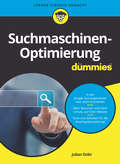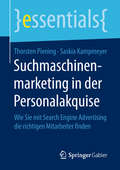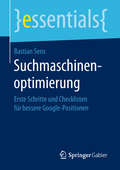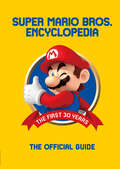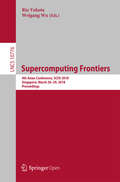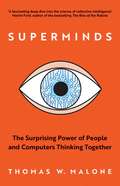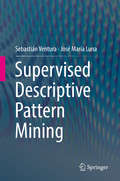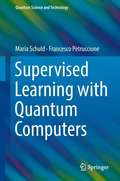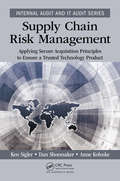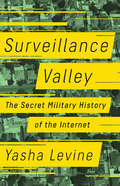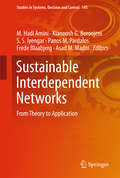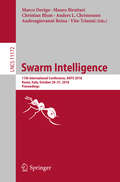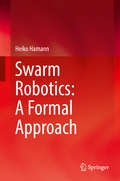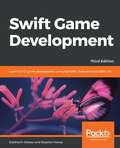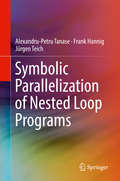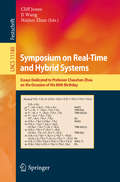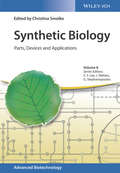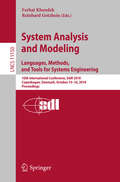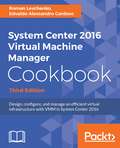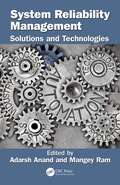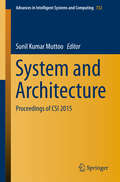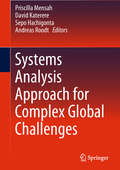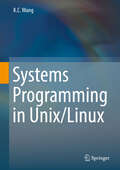- Table View
- List View
Suchmaschinen-Optimierung für Dummies (Für Dummies)
by Julian DzikiSie haben ein Unternehmen gegründet und Ihre Website geht demnächst online? Sie sind gerüstet für zahlreiche Besucher und hoffen auf hohe Umsätze? Dann ist es Zeit für das Feintuning. Dieses Buch zeigt Ihnen, wie Ihre Website von Google besser gefunden wird und wie Sie bei Google ganz nach oben kommen. Finden Sie die richtigen Suchbegriffe und stimmen Sie Ihre Inhalte darauf ab, optimieren Sie Ihre Snippets und unterstützen Sie den Google-Crawler beim Erfassen der Seiten. Zahlreiche Beispiele und Anekdoten aus der SEO-Praxis sorgen für ein gutes Ranking und für Spaß beim Lesen.
Suchmaschinenmarketing in der Personalakquise: Wie Sie mit Search Engine Advertising die richtigen Mitarbeiter finden (essentials)
by Thorsten Piening Saskia KampmeyerThorsten Piening und Saskia Kampmeyer zeigen in diesem essential kompakt und auf den Punkt gebracht, wie Unternehmen im Internet neue Mitarbeiter gewinnen und insbesondere Search Engine Advertising (SEA) zielführend dafür nutzen können. Die Autoren erklären, wie Google und Co. die Candidate Journey effektiv unterstützen können und wie wichtig das kontinuierliche Monitoring mit allen Kennzahlen ist. Angereichert ist das essential mit zahlreichen praktischen Beispielen und konkreten Handlungsempfehlungen.
Suchmaschinenoptimierung: Erste Schritte und Checklisten für bessere Google-Positionen (essentials)
by Bastian SensDieses essential erläutert die wesentlichen Erfolgsfaktoren der Suchmaschinenoptimierung und liefert neben aktuellen Trends auch praxisorientierte Checklisten zur professionellen Einführung von SEO. Dieses Werk enthält zudem zahlreiche Tools für eine effektivere Suchmaschinenoptimierung. Gespickt mit Beispielen aus der Agenturpraxis zeigt der Autor die vier essenziellen Phasen der Suchmaschinenoptimierung. Falls Sie einen Website-Relaunch planen oder Ihre bestehende Website in Google top positionieren möchten, ist dieses Buch die richtige Grundlage.
Super Mario Encyclopedia: The Official Guide to the First 30 Years
by NintendoPower Up!Super Mario Encyclopedia is jam-packed with content from all seventeen Super Mario games--from the original Super Mario Bros. to Super Mario 3D World. Track the evolution of the Goomba, witness the introduction of Yoshi, and relive your favorite levels. This tome also contains an interview with producer Takashi Tezuka, tips to help you find every coin, star, sun, and mushroom--even explanations of glitches! With information on enemies, items, obstacles, and worlds from over thirty years of Mario, Super Mario Encyclopedia is the definitive resource for everything Super Mario!
Supercomputing Frontiers: 4th Asian Conference, Scfa 2018, Singapore, March 26-29, 2018, Proceedings (Lecture Notes in Computer Science #10776)
by Rio Yokota Weigang WuIt constitutes the refereed proceedings of the 4th Asian Supercomputing Conference, SCFA 2018, held in Singapore in March 2018. Supercomputing Frontiers will be rebranded as Supercomputing Frontiers Asia (SCFA), which serves as the technical programme for SCA18. The technical programme for SCA18 consists of four tracks: Application, Algorithms & LibrariesProgramming System SoftwareArchitecture, Network/Communications & ManagementData, Storage & VisualisationThe 20 papers presented in this volume were carefully reviewed nd selected from 60 submissions.
Superminds: How Hyperconnectivity is Changing the Way We Solve Problems
by Thomas W. MaloneIs Apple conscious? Could a cyber–human system sense a potential terrorist attack? Or make diagnosing a rare and little-known disease routine? Computers are not replacing us: they are enhancing us. Different intelligences are joining together to do things we thought were impossible. Whether it&’s devising innovations to tackle climate change, helping job seekers and employers find one another, or identifying the outbreak of a serious disease, groups of humans and machines are already working together to solve all sorts of problems. And they will do a lot more. The future will be like another world – a place where we&’ll think differently. In many ways, we are already there.
Supervised Descriptive Pattern Mining
by Sebastián Ventura José María LunaThis book provides a general and comprehensible overview of supervised descriptive pattern mining, considering classic algorithms and those based on heuristics. It provides some formal definitions and a general idea about patterns, pattern mining, the usefulness of patterns in the knowledge discovery process, as well as a brief summary on the tasks related to supervised descriptive pattern mining. It also includes a detailed description on the tasks usually grouped under the term supervised descriptive pattern mining: subgroups discovery, contrast sets and emerging patterns. Additionally, this book includes two tasks, class association rules and exceptional models, that are also considered within this field.A major feature of this book is that it provides a general overview (formal definitions and algorithms) of all the tasks included under the term supervised descriptive pattern mining. It considers the analysis of different algorithms either based on heuristics or based on exhaustive search methodologies for any of these tasks. This book also illustrates how important these techniques are in different fields, a set of real-world applications are described.Last but not least, some related tasks are also considered and analyzed. The final aim of this book is to provide a general review of the supervised descriptive pattern mining field, describing its tasks, its algorithms, its applications, and related tasks (those that share some common features).This book targets developers, engineers and computer scientists aiming to apply classic and heuristic-based algorithms to solve different kinds of pattern mining problems and apply them to real issues. Students and researchers working in this field, can use this comprehensive book (which includes its methods and tools) as a secondary textbook.
Supervised Learning with Quantum Computers (Quantum Science and Technology)
by Maria Schuld Francesco PetruccioneQuantum machine learning investigates how quantum computers can be used for data-driven prediction and decision making. The books summarises and conceptualises ideas of this relatively young discipline for an audience of computer scientists and physicists from a graduate level upwards. It aims at providing a starting point for those new to the field, showcasing a toy example of a quantum machine learning algorithm and providing a detailed introduction of the two parent disciplines. For more advanced readers, the book discusses topics such as data encoding into quantum states, quantum algorithms and routines for inference and optimisation, as well as the construction and analysis of genuine ``quantum learning models''. A special focus lies on supervised learning, and applications for near-term quantum devices.
Supply Chain Risk Management: Applying Secure Acquisition Principles to Ensure a Trusted Technology Product (Internal Audit and IT Audit)
by Dan Shoemaker Anne Kohnke Ken SiglerThe book presents the concepts of ICT supply chain risk management from the perspective of NIST IR 800-161. It covers how to create a verifiable audit-based control structure to ensure comprehensive security for acquired products. It explains how to establish systematic control over the supply chain and how to build auditable trust into the products and services acquired by the organization. It details a capability maturity development process that will install an increasingly competent process and an attendant set of activities and tasks within the technology acquisition process. It defines a complete and correct set of processes, activities, tasks and monitoring and reporting systems.
Surveillance Valley: The Secret Military History of the Internet
by Yasha LevineThe internet is the most effective weapon the government has ever built.In this fascinating book, investigative reporter Yasha Levine uncovers the secret origins of the internet, tracing it back to a Pentagon counterinsurgency surveillance project.A visionary intelligence officer, William Godel, realized that the key to winning the war in Vietnam was not outgunning the enemy, but using new information technology to understand their motives and anticipate their movements. This idea--using computers to spy on people and groups perceived as a threat, both at home and abroad--drove ARPA to develop the internet in the 1960s, and continues to be at the heart of the modern internet we all know and use today. As Levine shows, surveillance wasn't something that suddenly appeared on the internet; it was woven into the fabric of the technology.But this isn't just a story about the NSA or other domestic programs run by the government. As the book spins forward in time, Levine examines the private surveillance business that powers tech-industry giants like Google, Facebook, and Amazon, revealing how these companies spy on their users for profit, all while doing double duty as military and intelligence contractors. Levine shows that the military and Silicon Valley are effectively inseparable: a military-digital complex that permeates everything connected to the internet, even coopting and weaponizing the antigovernment privacy movement that sprang up in the wake of Edward Snowden.With deep research, skilled storytelling, and provocative arguments, Surveillance Valley will change the way you think about the news--and the device on which you read it.
Surviving Game School…and the Game Industry After That
by Michael Lynch Adrian EarleSurviving Game School speaks about what to expect in a top game design or game development college program, and what to expect once students get out. Making games is not at all the same as playing games. Uncommonly blunt, the book reveals the rigors – and the joys – of working in this industry. Along the way the book touches on themes of time management, creativity, teamwork, and burnout. The authors explore the impact working in the game industry can have on personal relationships and family life. The book closes with advice about life’s goals and building and keeping a sensible balance between work and everything else.
Sustainable Interdependent Networks: From Theory To Application (Studies In Systems, Decision And Control #145)
by Panos M. Pardalos Frede Blaabjerg Kianoosh G. Boroojeni M. Hadi Amini S. S. Iyengar Asad M. MadniThis book focuses on the theory and application of interdependent networks. The contributors consider the influential networks including power and energy networks, transportation networks, and social networks. The first part of the book provides the next generation sustainability framework as well as a comprehensive introduction of smart cities with special emphasis on energy, communication, data analytics and transportation. The second part offers solutions to performance and security challenges of developing interdependent networks in terms of networked control systems, scalable computation platforms, and dynamic social networks. The third part examines the role of electric vehicles in the future of sustainable interdependent networks. The fourth and last part of this volume addresses the promises of control and management techniques for the future power grids.
Swarm Intelligence: 11th International Conference, ANTS 2018, Rome, Italy, October 29–31, 2018, Proceedings (Lecture Notes in Computer Science #11172)
by Christian Blum Marco Dorigo Mauro Birattari Anders L. Christensen Andreagiovanni Reina Vito TrianniThis book constitutes the proceedings of the 11th International Conference on Swarm Intelligence, ANTS 2018, held in Rome, Italy, in October 2018. The 24 full papers and 12 short papers presented in this volume were carefully reviewed and selected from 69 submissions. They are devoted to the field of swarm intelligence as a whole, without any bias towards specific research directions.
Swarm Robotics: A Formal Approach
by Heiko HamannThis book provides an introduction to Swarm Robotics, which is the application of methods from swarm intelligence to robotics. It goes on to present methods that allow readers to understand how to design large-scale robot systems by going through many example scenarios on topics such as aggregation, coordinated motion (flocking), task allocation, self-assembly, collective construction, and environmental monitoring. The author explains the methodology behind building multiple, simple robots and how the complexity emerges from the multiple interactions between these robots such that they are able to solve difficult tasks. The book can be used as a short textbook for specialized courses or as an introduction to Swarm Robotics for graduate students, researchers, and professionals who want a concise introduction to the field.
Swift Game Development: Learn iOS 12 game development using SpriteKit, SceneKit and ARKit 2.0, 3rd Edition
by Siddharth Shekar Stephen HaneyEmbrace the mobile gaming revolution by creating popular iOS games with Swift 4.2Key FeaturesLearn to create games for iPhone and iPad with the latest Swift Programming languageUnderstand the fundamental concepts of game development like game physics, camera action, sprites, controls, among othersBuild Augmented reality games using ARKit for true performanceBook DescriptionSwift is the perfect choice for game development. Developers are intrigued by Swift and want to make use of new features to develop their best games yet. Packed with best practices and easy-to-use examples, this book leads you step by step through the development of your first Swift game.The book starts by introducing Swift's best features – including its new ones for game development. Using SpriteKit, you will learn how to animate sprites and textures. Along the way, you will master physics, animations, and collision effects and how to build the UI aspects of a game. You will then work on creating a 3D game using the SceneKit framework. Further, we will look at how to add monetization and integrate Game Center. With iOS 12, we see the introduction of ARKit 2.0. This new version allows us to integrate shared experiences such as multiplayer augmented reality and persistent AR that is tied to a specific location so that the same information can be replicated on all connected devices. In the next section, we will dive into creating Augmented Reality games using SpriteKit and SceneKit. Then, finally, we will see how to create a Multipeer AR project to connect two devices, and send and receive data back and forth between those devices in real time.By the end of this book, you will be able to create your own iOS games using Swift and publish them on the iOS App Store.What you will learnDeliver powerful graphics, physics, and sound in your game by using SpriteKit and SceneKitSet up a scene using the new capabilities of the scene editor and custom classesMaximize gameplay with little-known tips and strategies for fun, repeatable actionMake use of animations, graphics, and particles to polish your gameUnderstand the current mobile monetization landscapeIntegrate your game with Game CenterDevelop 2D and 3D Augmented Reality games using Apple's new ARKit frameworkPublish your game to the App StoreWho this book is forIf you wish to create and publish iOS games using Swift, then this book is for you. No prior game development or experience with Apple ecosystem is needed.
Symbolic Parallelization of Nested Loop Programs
by Frank Hannig Jürgen Teich Alexandru-Petru TanaseThis book introduces new compilation techniques, using the polyhedron model for the resource-adaptive parallel execution of loop programs on massively parallel processor arrays. The authors show how to compute optimal symbolic assignments and parallel schedules of loop iterations at compile time, for cases where the number of available cores becomes known only at runtime. The compile/runtime symbolic parallelization approach the authors describe reduces significantly the runtime overhead, compared to dynamic or just‐in-time compilation. The new, on‐demand fault‐tolerant loop processing approach described in this book protects loop nests for parallel execution against soft errors.
Symposium on Real-Time and Hybrid Systems: Essays Dedicated to Professor Chaochen Zhou on the Occasion of His 80th Birthday (Lecture Notes in Computer Science #11180)
by Naijun Zhan Ji Wang Cliff JonesThis volume is published in honor of Professor Chaochen Zhou’s 80th birthday. The Festschrift contains 13 refereed papers by leading researchers who were among the participants of the celebratory conference in Changsha, China that took place in October 2017. The papers cover a broad spectrum of subjects related to Formal Methods for the development of computer systems. Topics include Probabilistic Programming, Concurrency, Quantum Computing, Domain Engineering, Real-time and Hybrid Systems, and Cloud Computing. Chaochen Zhou is internationally recognized for his own contributions and for the wide influence that he has had through his appointments in Oxford (UK) where he collaborated with Professor Tony Hoare, Lyngby (Denmark) where he worked with Professor Dines Bjørner, UNU-IIST (Macau) where he moved from being Principal Research Fellow to his appointed as Director of the Institute, as well as in Beijing. His book on the Duration Calculus (joint with Michael Hansen) made a seminal contribution to specifying and reasoning about real-time systems. Chaochen Zhou’s contributions have been marked by his election as a member of the Chinese Academy of Sciences.
Synthetic Biology: Parts, Devices and Applications (Advanced Biotechnology)
by Jens Nielsen Gregory Stephanopoulos Sang Yup Lee Christina Smolkeneed new text The inaugural volume of this new reference work in biotechnology is the most comprehensive of its kind on the market, covering everything from DNA synthesis to RNA interference and biosensors. Edited by the renowned scientists Sven Panke of the Swiss Federal Institute of Technology and Christina Smolke from Stanford University.
System Analysis and Modeling. Languages, Methods, and Tools for Systems Engineering: 10th International Conference, SAM 2018, Copenhagen, Denmark, October 15–16, 2018, Proceedings (Lecture Notes in Computer Science #11150)
by Ferhat Khendek Reinhard GotzheinThis book constitutes the refereed proceedings of the 10th International Conference on System Analysis and Modeling, SAM 2018, held in Copenhagen Denmark, in October 2018. The 12 full papers and 2 short papers presented were carefully reviewed and selected from 24 submissions. The papers describe innovations, trends, and experiences in modeling and analysis of complex systems using ITU-T's Specification and Description Language (SDL-2010) and Message Sequence Chart (MSC) notations, as well as related system design languages — including UML, ASN.1, TTCN, SysML and the User Requirements Notation (URN). This year’s edition of SAM will be under the theme “Languages, Methods, and Tools for Systems Engineering”, including languages and methods standardized by the ITU-T, and domain-specific languages. Also included are software engineering technologies, such as for requirements engineering, software verification and validation, and automated code generation.
System Center 2016 Virtual Machine Manager Cookbook, Third Edition: Design, Configure, And Manage An Efficient Virtual Infrastructure With Vmm In System Center 2016
by Roman LevchenkoMicrosoft System Center Virtual Machine Manager (SCVMM) focuses on efficiency with multiple features to help administrators consolidate physical servers within a centrally virtualized environment. This book will allow you to implement the Microsoft System Center family of components effectively and efficiently.
System Center 2016 Virtual Machine Manager Cookbook,: Design, configure, and manage an efficient virtual infrastructure with VMM in System Center 2016
by Edvaldo Alessandro Cardoso Roman LevchenkoMaximize your administration skills effectively and efficiently Key Features Implement cost-effective virtualization solutions for your organization with actionable recipes Explore the concepts of VMM with real-world use cases Use the latest features with VMM 2016 such as Cluster OS Rolling Upgrade, Guarded Fabric and Storage Spaces Direct Book Description Virtual Machine Manager (VMM) 2016 is part of the System Center suite to configure and manage datacenters and offers a unified management experience on-premises and Azure cloud. This book will be your best companion for day-to-day virtualization needs within your organization, as it takes you through a series of recipes to simplify and plan a highly scalable and available virtual infrastructure. You will learn the deployment tips, techniques, and solutions designed to show users how to improve VMM 2016 in a real-world scenario. The chapters are divided in a way that will allow you to implement the VMM 2016 and additional solutions required to effectively manage and monitor your fabrics and clouds. We will cover the most important new features in VMM 2016 across networking, storage, and compute, including brand new Guarded Fabric, Shielded VMs and Storage Spaces Direct. The recipes in the book provide step-by-step instructions giving you the simplest way to dive into VMM fabric concepts, private cloud, and integration with external solutions such as VMware, Operations Manager, and the Windows Azure Pack. By the end of this book, you will be armed with the knowledge you require to start designing and implementing virtual infrastructures in VMM 2016. What you will learn - Plan and design a VMM architecture for real-world deployment - Configure fabric resources, including compute, networking, and storage - Create and manage Storage Spaces Direct clusters in VMM - Configure Guarded Fabric with Shielded VMs - Create and deploy virtual machine templates and multi-tier services - Manage Hyper-V and VMware environments from VMM - Enhance monitoring and management capabilities - Upgrade to VMM 2016 from previous versions Who this book is for If you are a solutions architect, technical consultant, administrator, or any other virtualization enthusiast who needs to use Microsoft System Center Virtual Machine Manager in a real-world environment, then this is the book for you.
System Reliability Management: Solutions and Technologies (Advanced Research in Reliability and System Assurance Engineering)
by Mangey Ram Adarsh AnandThis book provides the latest research advances in the field of system reliability assurance and engineering. It contains reference material for applications of reliability in system engineering, offering a theoretical sound background with adequate numerical illustrations. Included are concepts pertaining to reliability analysis, assurance techniques and methodologies, tools, and practical applications of system reliability modeling and allocation. The collection discusses various soft computing techniques like artificial intelligence and particle swarm optimization approach for reliability assessment. Importance of differentiating between the optimal release time and testing stop time of the software has been explicitly discussed and presented in the book. Features: Creates understanding of the costs associated with complex systems Covers reliability measurement of engineering systems Incorporates an efficient effort-based expenditure policy incorporating cost and reliability criteria Provides information for optimal testing stop and release time of software system Presents software performance and security layout Addresses reliability prediction and its maintenance through advanced analytics techniques Overall, System Reliability Management: Solutions and Techniques is a collaborative and interdisciplinary approach for better communication of problems and solutions to increase the performance of the system for better utilization and resource management.
System and Architecture: Proceedings of CSI 2015 (Advances in Intelligent Systems and Computing #732)
by Sunil Kumar MuttooThis book comprises the select proceedings of the annual convention of the Computer Society of India. Divided into 10 topical volumes, the proceedings present papers on state-of-the-art research, surveys, and succinct reviews. The volumes cover diverse topics ranging from parallel processing to system buses, and from computer architecture to VLIW (very long instruction word). This book focuses on systems and architecture. It aims at informing the readers about those attributes of a system visible to a programmer. This book also deals with various innovations and improvements in computing technologies to improve the size, capacity and performance of modern-day computing systems. The contents of this book will be useful to professionals and researchers alike.
Systems Analysis Approach for Complex Global Challenges
by Priscilla Mensah David Katerere Sepo Hachigonta Andreas RoodtThis book, which contains a collection of review articles as well as focus on evidence-based policy making, will serve as a valuable resource not just for all postgraduate students conducting research using systems analysis thinking but also for policy makers. To our knowledge, a book of this nature which also has a strong African focus is currently not available. The book examines environmental and socio-economic risks with the aim of providing an analytical foundation for the management and governance of natural resources, disasters, addressing climate change, and easing the technological and ecological transitions to sustainability. It provides scientific and strategic analysis to better understand the dynamics of future energy transitions, their main driving forces, enabling factors, barriers, as well as their consequences for the social, economic and environmental dimensions of human wellbeing. Science-based policy advice is achieved through an integrated assessment and modeling of how to simultaneously address the major energy policy challenges in the areas of environment (climate change and air pollution), energy poverty (or access to affordable and clean energy for the poor), energy security and reliability. It also aims to improve our understanding of ecosystems and their management in today’s changing world—in particular, the current state of ecosystems, and their ecological thresholds and buffering capacities. It provides support for policy makers in developing rational, realistic and science-based regional, national and global strategies for the production of fuel, food and fibre that sustain ecosystem services and safeguard food security. Finally, it addresses the human development dimension of global change based on comprehensive studies on the changing size and composition of human populations around the world by analyzing both their impacts and the differential vulnerabilities by age, gender and level of education.
Systems Programming in Unix/Linux
by K. C. WangCovering all the essential components of Unix/Linux, including process management, concurrent programming, timer and time service, file systems and network programming, this textbook emphasizes programming practice in the Unix/Linux environment. Systems Programming in Unix/Linux is intended as a textbook for systems programming courses in technically-oriented Computer Science/Engineering curricula that emphasize both theory and programming practice. The book contains many detailed working example programs with complete source code. It is also suitable for self-study by advanced programmers and computer enthusiasts.Systems programming is an indispensable part of Computer Science/Engineering education. After taking an introductory programming course, this book is meant to further knowledge by detailing how dynamic data structures are used in practice, using programming exercises and programming projects on such topics as C structures, pointers, link lists and trees.This book provides a wide range of knowledge about computer systemsoftware and advanced programming skills, allowing readers to interface with operatingsystem kernel, make efficient use of system resources and develop application software.It also prepares readers with the needed background to pursue advanced studies inComputer Science/Engineering, such as operating systems, embedded systems, databasesystems, data mining, artificial intelligence, computer networks, network security,distributed and parallel computing.
